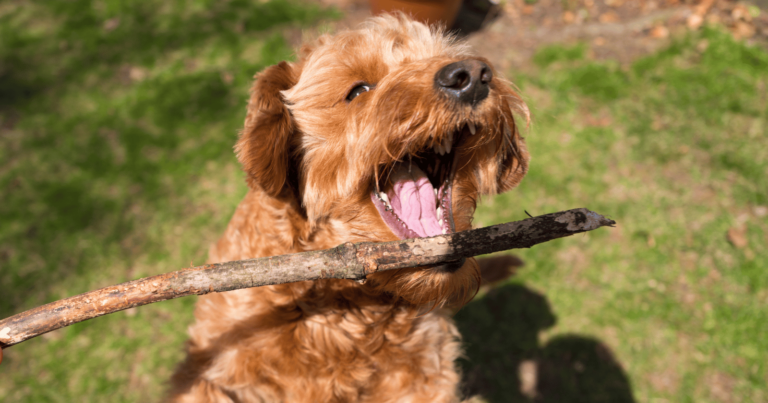As a pet owner, there’s nothing more bewildering than seeing your usually energetic dog refuse to walk.
It’s like they’ve suddenly decided they’re done with their daily exercise, leaving you hanging with the leash.
But before you start worrying or blaming yourself, remember that dogs can’t verbally express their discomfort or distress.
It often manifests in changes in behavior – like refusing to walk.
In this case, there could be several reasons behind your furry friend’s sudden strike against walks.
So let’s delve into 8 possible reasons why your dog may be refusing to walk, and how you can help them get back on track.
1. Medical issues
As a dog parent, your first concern when your dog refuses to walk should be their health.
Just like us, dogs can experience a range of physical issues that might make the simple act of walking uncomfortable or even painful.
These can include arthritis, injuries, or other chronic conditions.
And it’s not always obvious.
Dogs are masters at hiding their discomfort – it’s an instinctual survival trait.
So even if they’re in pain, they might not show it until the issue has progressed significantly.
So if your dog is suddenly giving you a hard time about walks, consider booking a vet appointment.
It’s always better to rule out any underlying medical issues first before considering other factors.
2. Fear or anxiety
I remember when my own dog, Bella, suddenly refused to walk.
She would lock her legs and simply wouldn’t budge.
It was so out of character for her, a usually energetic and happy-go-lucky Labrador.
After ruling out medical issues, I began to wonder if something was scaring her.
One day, I noticed she balked at the sound of a nearby construction site – the loud noises seemed to be causing her distress.
Fear or anxiety can be a major deterrent for dogs when it comes to walking.
It could be anything from loud noises and crowded places to past traumatic experiences or specific objects that scare them.
In Bella’s case, we started taking a quieter route for our walks, away from the construction noise.
Gradually, she became more comfortable and started looking forward to her walks again.
So remember, understanding your dog’s fears and anxieties plays a crucial role in addressing their reluctance to walk.
3. Overstimulation

Dogs have an incredibly keen sense of smell – so powerful that they can detect some odors in parts per trillion.
Imagine, their world is filled with a kaleidoscope of scents that we can’t even begin to comprehend!
This bombardment of sensory information can sometimes be too much for your dog, causing them to refuse to walk.
This is especially true in busy or new areas where the concentration of unfamiliar scents and sounds can be overwhelming.
So, if your dog is refusing to walk in certain areas or at certain times, it could be because they’re overstimulated.
Try changing your walking routine or location and see if that makes a difference for your furry friend.
4. Lack of training or socialization
Training and socialization are crucial parts of a dog’s life.
They help your furry friend understand their world better and react appropriately to various situations.
If your dog hasn’t been trained or socialized properly, they might become fearful or anxious when they encounter new experiences during walks.
This can lead to them refusing to walk altogether.
It’s never too late to start training your dog.
You can always seek the help of a professional trainer or enroll your dog in training classes.
5. Poorly fitting gear
Imagine trying to walk with shoes that are too tight or a belt squeezing your waist.
Uncomfortable, right?
The same goes for dogs with poorly fitting harnesses or collars.
If the walking gear is causing discomfort, your dog may associate the pain with the act of walking and refuse to go on walks.
This can be easily overlooked, yet it’s a common reason for dogs not wanting to walk.
It’s important to ensure your dog’s harness, collar, and leash fit properly and are comfortable.
Make it a habit to routinely check for any signs of wear and tear that could be causing your dog discomfort.
6. Emotional distress
Our canine friends are deeply emotional beings.
They form strong bonds with us and are sensitive to the energy and emotions around them.
If there’s been a recent change in your household, like moving to a new place, bringing home a new pet, or even a death in the family, it can cause emotional distress to your dog.
This distress can manifest in many ways, including refusing to walk.
In these situations, patience and understanding are key.
Offering extra comfort and reassurance can help your dog adjust to the changes.
7. Changes in routine

I’ve always been one for routine, and it turns out, so is my Golden Retriever, Max.
When I started a new job that changed our daily schedule, Max didn’t take it well.
His usual morning walks were pushed to the afternoons, and he just flat out refused.
It was like he was staging a protest against the new routine.
Changes in routine can be very unsettling for dogs.
They thrive on predictability and consistency, so any significant changes can cause them to behave differently, including refusing their walks.
It took a while for Max to adjust to our new schedule.
I found that slowly transitioning him to the new routine and maintaining consistency helped him get back on track.
So if you’re facing similar issues with your dog, remember that patience and consistency are key.
8. Aging
Just like us, as dogs age, they may not have the same energy levels or physical capacity as they used to.
Older dogs may experience joint pain, vision loss, or just general fatigue, which can make walks less appealing.
If your older dog is refusing to walk, it’s essential to consult with your vet to understand if age-related health issues could be the cause.
You might need to adjust the length and intensity of walks or even consider other forms of exercise that are gentler on their aging bodies.
Need for motivation
At the end of the day, dogs, just like people, sometimes need a little extra motivation.
If walks have become monotonous or predictable, your dog might just be bored.
Try bringing in new elements to your walks – a different route, new toys, or even treat-based incentives.
A bit of change and excitement can make a world of difference in getting your dog enthusiastic about walks again.
Remember, walks are more than just exercise – they’re an adventure, an opportunity for exploration and bonding.
Keep it fun and engaging, and your dog will be tail-waggingly eager for their next walk.












